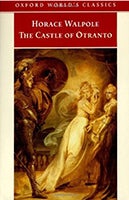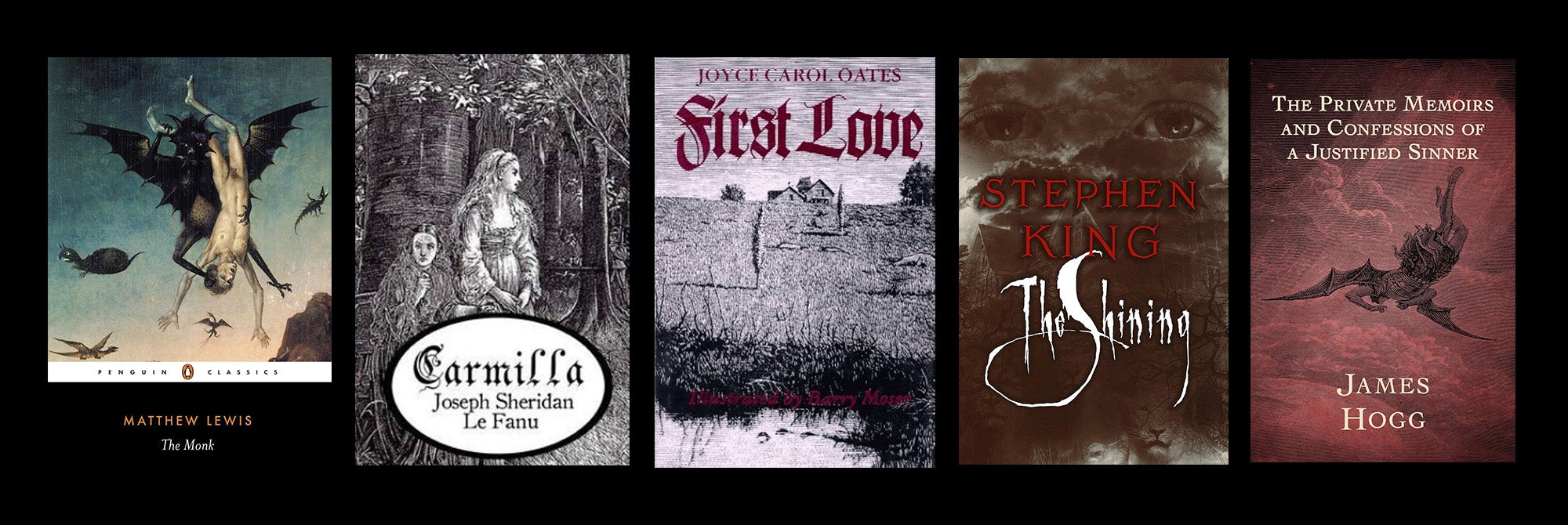
Lifting the veil on history’s best Gothic literature
The tropes are now well-worn. A dark castle, lashed by rain, in which strange sounds echo from hidden rooms. A host whose behavior is both disarming and slightly sinister. The glimmer of something white in a mirror — a ghost, or just a flash of moonlight?
The trappings of Gothic literature might be a tad cliché, but the genre hasn’t lost its allure since it first emerged in 18th-century Britain. That’s because those rather campy hauntings and eerie manors are just a means to explore a much more intriguing mystery: the nature of reality itself.
Gothic literature arose in part as a reaction to the Enlightenment, which was then reframing the world through objective science and rationality, says Margaret Russett, professor of English at the USC Dornsife College of Letters, Arts and Sciences. In response, many writers became interested in things that couldn’t be so easily explained away, like the supernatural or the churning, irrational minds of humans.
“It was the beginning of an exploration of what we would now call ‘the unconscious,’” says Russett, an expert in Gothic literature who provides some suggestions for readers who wish to dig into the genre. “It was about testing reality, and the ways that reality can fool you.”
The Castle of Otranto (1764) by Horace Walpole
 The origin of the genre is generally traced to the publication of Horace Walpole’s The Castle of Otranto, in 1764. His romance features an imprisoned heroine and strange supernatural events, including a giant, deadly helmet that falls from the heavens.
The origin of the genre is generally traced to the publication of Horace Walpole’s The Castle of Otranto, in 1764. His romance features an imprisoned heroine and strange supernatural events, including a giant, deadly helmet that falls from the heavens.
Walpole made a few other key creative decisions that shaped the genre: He set his story in the past, the 12th century, and on the European continent, which the British then regarded as civilization’s last frontier.
“In France or Italy, you could have your heroines plausibly kidnapped and immured in a dungeon. Those kinds of things weren’t thought to happen in England in the late 18th century, but outside of Britain, and in an earlier time period, anything could happen,” says Russett. Gothic tales could thus indulge in wild behavior and events that the modernizing “Age of Reason” was busily doing away with.
The book was subtitled “a Gothic story” in reference to the medieval setting and its Gothic style castle. Later critics applied the label to other literary works that resembled Walpole’s, although these early writers never actually used the term themselves.
The Mysteries of Udolpho (1794) by Ann Radcliffe
 The themes of imprisonment and escape that permeated early Gothic literature, often in the form of damsels in dungeons, resonated with British women, who soon became essential contributors to the genre.
The themes of imprisonment and escape that permeated early Gothic literature, often in the form of damsels in dungeons, resonated with British women, who soon became essential contributors to the genre.
“How many women were actually imprisoned by their husbands and fed on bread and water in the late 18th century? Probably not that many. How many felt imprisoned in their domestic situation or that their freedoms were radically circumscribed? Lots and lots, probably. The Gothic novel gave them a way to explore these anxieties,” says Russett.
Perhaps the most influential female Gothic writer was Ann Radcliffe. Her four-volume The Mysteries of Udolpho, which details the fate of the orphaned Emily St. Aubert who gets locked in a castle by an Italian count, drew thousands of eager readers and sparked generations of imitators.
Radcliffe, and those she inspired, weren’t just interested in depicting female victimhood. “These novels are explorations of both freedom and oppression: How does a woman negotiate her way out of a situation in which her rights are being abrogated? They’re a mode in which female characters can be heroes,” says Russett.
Northanger Abbey (1817) by Jane Austen
 Radcliffe’s enduring influence was so outsized that Jane Austen’s first completed novel, Northanger Abbey, was written entirely as a parody of Radcliffe’s brand of the Gothic feminine.
Radcliffe’s enduring influence was so outsized that Jane Austen’s first completed novel, Northanger Abbey, was written entirely as a parody of Radcliffe’s brand of the Gothic feminine.
Like most parodies, the story also ended up codifying the key elements of the genre it was sending up, says Russett. A naïve yet plucky female heroine? Check. An older male villain with sinister designs? Check. A romantic interest who’s a little on the ineffectual side? Check.
Jane Eyre (1847) by Charlotte Bronte
 In the mid-19th century, writers and sisters Ann, Charlotte and Emily Bronte helped revive the Gothic tradition with novels like Charlotte’s Jane Eyre, in which an orphaned heroine finds both romance and terror on a country estate. The novel demonstrates how writers were becoming increasingly interested in the internal world.
In the mid-19th century, writers and sisters Ann, Charlotte and Emily Bronte helped revive the Gothic tradition with novels like Charlotte’s Jane Eyre, in which an orphaned heroine finds both romance and terror on a country estate. The novel demonstrates how writers were becoming increasingly interested in the internal world.
“In Jane Eyre, for example, the heroine appears to be very self-contained and restrained, prudish even, but inside, there’s this riot of passionate emotion going on,” says Russett.
The sisters grew up reading Radcliffe as well as the Romantic poets, for whom the natural world was a source of potent inspiration, explains Russet. “The Brontes’ work is a synthesis, in some ways, of both the Romantic interest in landscape, self-expression, imagination and also the Gothic themes of imprisonment and escape,” she says.
Beloved (1987) by Toni Morrison
 Gothic writers are often regarded as secondary to great novelists, says Russett, but that’s a mistake. “It’s not like there’s ‘important fiction’ and then there’s Gothic fiction. Major works of American and British literature have borrowed some of the techniques of the Gothic novel,” she says.
Gothic writers are often regarded as secondary to great novelists, says Russett, but that’s a mistake. “It’s not like there’s ‘important fiction’ and then there’s Gothic fiction. Major works of American and British literature have borrowed some of the techniques of the Gothic novel,” she says.
In Nathaniel Hawthorne’s classic Young Goodman Brown, a strange vision of a witch’s Sabbath sends the main character into a spiral of paranoia and self-isolation. Herman Melville, himself a devoted fan of Hawthorne, penned a now famous tale haunted by an inscrutable, ghostly whale.
Morrison’s Beloved, in which a malevolent, vampiric spirit torments a family of former slaves, won the Pulitzer Prize for Fiction in 1988. Published more than 200 years after Walpole set the Gothic into motion, it’s a demonstration of the genre’s enduring power to illuminate the darkest corners of our reality.
Extra Credit
Looking for something a little more specific? Try these titles:

Blood and guts Gothic: The Monk (1796) by Matthew Lewis includes a murderous monk and cross-dressing clerics.
For fang fans: Sheridan Le Fanu’s Carmilla (1872) features the first female vampire.
Feminist Gothic: First Love: A Gothic Tale (1996) by Joyce Carol Oates. “It’s an exploration, not just of individual male villains, but also of patriarchy,” says Russett.
Thrills on film: The Shining (1977) by Stephen King swaps morose castle for haunted resort hotel and its later film treatment put the Gothic on celluloid.
Psychological thrills: One of Russett’s favorites, The Private Memoirs and Confessions of a Justified Sinner (1824) by James Hogg tells the same story twice, once from the perspective of its delusional protagonist, and again from the perhaps-as-delusional perspective of an enlightened editor.